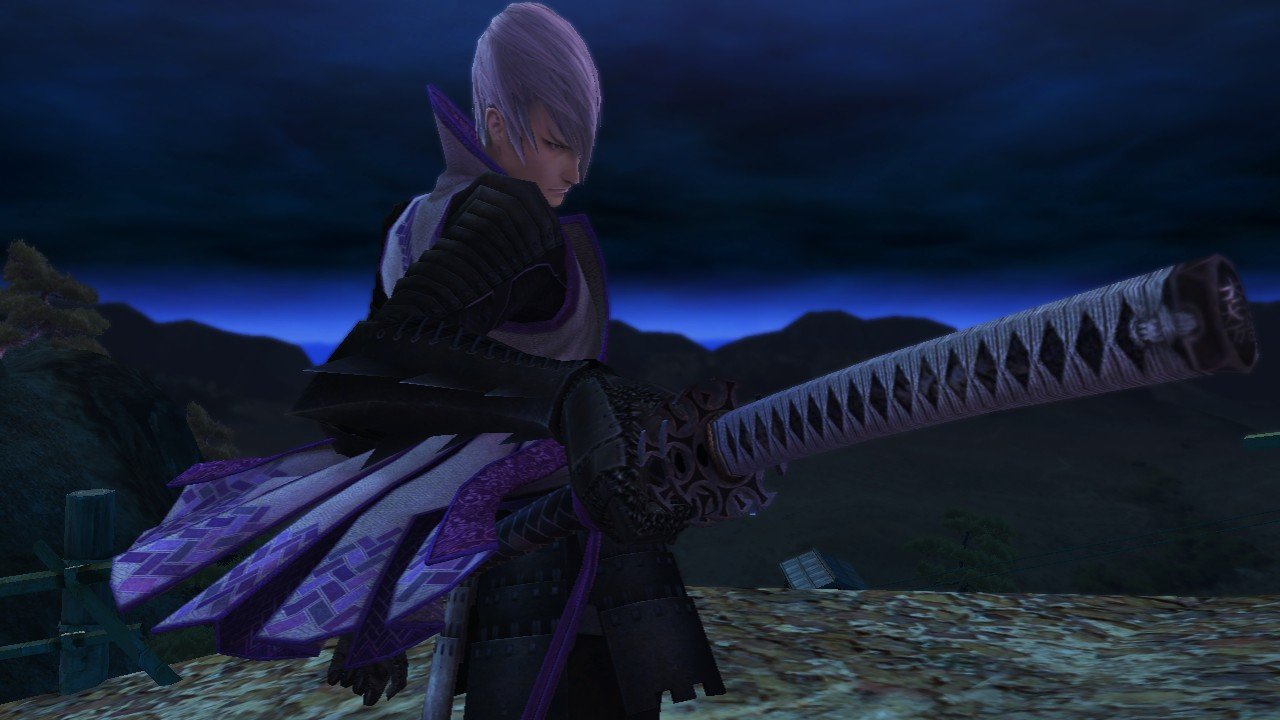Sengoku Basara: Samurai Heroes Hands-On Impressions
Who says feudal Japan never had feathered hair and red leather jackets?
The nation of Japan is a complex place--a vibrant melting pot of old and new that can be hard for an outsider to fully understand. But in the world of games, one thing is obvious: the Japanese sure do love the hack-and-slash action genre. We've seen it for years with the long-running Dynasty Warriors franchise, a series that may not move quite as many units stateside as it does in Japan, but still has a decent amount of name recognition over here. Less recognizable is Capcom's Sengoku Basara franchise. The first game in the series was released in North America as Devil Kings in 2005, but the myriad sequels--which have been turned into popular anime and manga spin-offs--came out only in Capcom's native Japan. Five years later, North Americans will get their taste of Sengoku Basara's more historically playful and oftentimes humorous take on button-mashing action when Samurai Heroes is released this fall.
Another Crab's Treasure Is A Soulslike 3D Platformer | GameSpot Review Stellar Blade Review Super Monkey Ball Banana Rumble - Official Multiplayer Features Trailer Nintendo 64 – April 2024 Game Updates – Nintendo Switch Online PUBG | Erangel Classic Returns Gori: Cuddly Carnage | Meow Launch Date Announcement Trailer Genshin Impact - "Arlecchino: Afterglow of Calamity" | Collected Miscellany Marvel Rivals - Official Loki Character Reveal Trailer | The King of Yggsgard Fortnite Festival - Official Billie Eilish Cinematic Season 3 Trailer Remnant 2 - The Forgotten Kingdom | DLC Launch Trailer Stellar Blade - Official "The Journey: Part 2" Behind The Scenes Trailer | PS5 Games Dead by Daylight | Tome 19: Splendor | Reveal Trailer
Please enter your date of birth to view this video
By clicking 'enter', you agree to GameSpot's
Terms of Use and Privacy Policy
The Dynasty Warriors comparison is apt insofar as Sengoku Basara: Samurai Heroes lets you play as a single character capable of dispatching dozens of enemies at a time. It's a combo-driven combat system where you play with the rhythm of light and heavy attacks to maneuver through castles and fortresses filled with all manner of enemy grunts. The main differences here are the stylized anime aesthetic and the focus on distinct personalities within the game's roster of playable characters. There are four main characters, who represent different warring factions seeking to bring Japan together under their own terms: Ieyasu Tokugawa, Mitsunari Ishida, Masamune Date, and Yukimura Sanada.
Each character has his own distinct look and weaponry. Mitsunari might hold the world record for the most immaculately maintained hair in all of 16th-century feudal Japan with his forward-combed lock of periwinkle bangs, while Yukimura seems to have somehow managed to time travel to the 1980s to obtain the exact red leather jacket Michael Jackson wore in the "Thriller" music video. As for weaponry, Ieyasu fights purely with his hands and is quite fond of shouting "May my fists unite us all!" while Yukimura carries not one, not two, but six katanas at once. Other weapons include options like dual spears and period-specific guns.
We had an opportunity to play through one of the game's stages, an area called Flooding Ueda Castle. In cycling through the faces on the character select screen, we asked but a simple question: Does one of these guys carry more swords than he has limbs to hold them with? Yes? Then we'll play as that guy. And so we went with Yukimura and his ridiculous belt of six swords. (Coincidentally, we asked producer Hiroyuki Kobayashi why he stopped at just six swords. It turns out that that's the most you can reasonably squeeze between the spaces on your fingers in order to swing them about like a maniacal samurai version of Wolverine. Makes sense.)
We're not sure where in the campaign the Flooding Ueda Castle stage is pulled from, but we were able to proceed through it without too much of a hassle. It didn't take much time to get a good grasp of how best to alternate between light and heavy attacks to keep waves of grunts at bay and the best time to use the Basara Art special attack (which is powered by a gauge that fills up as you defeat enemies) in order to take care of the bigger enemies and bosses. Enemy grunts are basic samurai and ninja types, heavy grunts lumber around with massive weapons like sledgehammers and spinning drills, and bosses include the other guys from the playable character screen. There was also an interesting miniboss fight against a guy with a "shadow clone technique" that let him create copies of himself to torment us during the fight.

All in all, Sengoku Basara doesn't feel remarkably different from other games in this particular genre. It's pretty easy to coast through long stretches of battles with little more than button mashing, though the boss encounters do throw quite a bit of difficulty your way from time to time. The one big thing working in the game's favor, though, is the distinct personalities of those characters, which are all quite eccentric in their own ridiculous ways. If all this sounds like your type of game, expect to see Sengoku Basara: Samurai Heroes released on the PlayStation 3 and Wii this fall.
Got a news tip or want to contact us directly? Email news@gamespot.com
Join the conversation